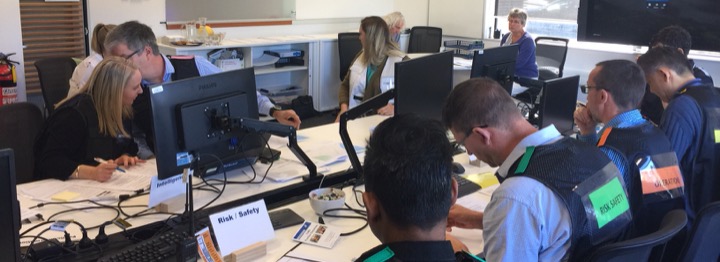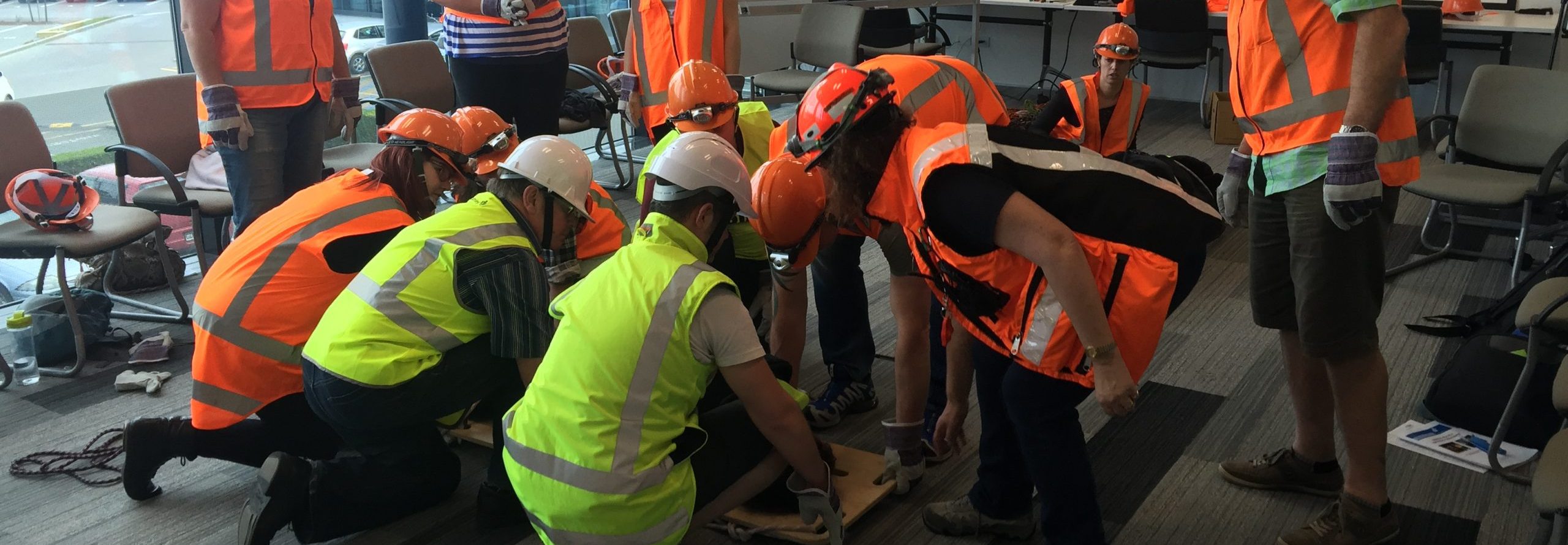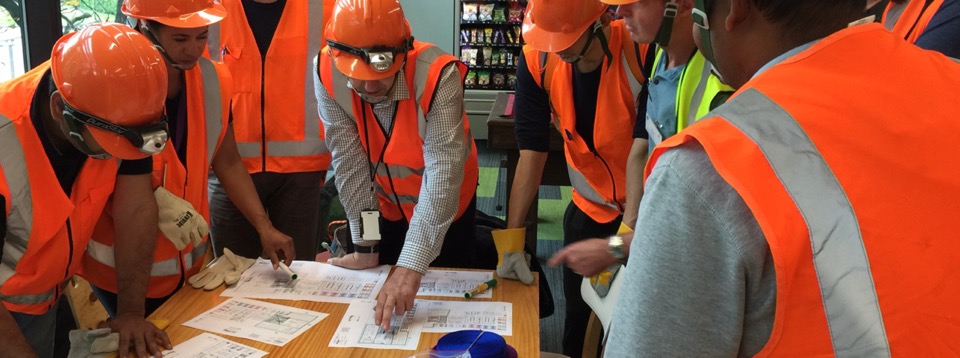Following the Government inquiry into the Response to the severe weather events that hit the North Island in 2023, a new Emergency Management Bill in being introduced in Parliament. The Bill will replace the Civil Defence Emergency Management Act ...
Pets in an emergency
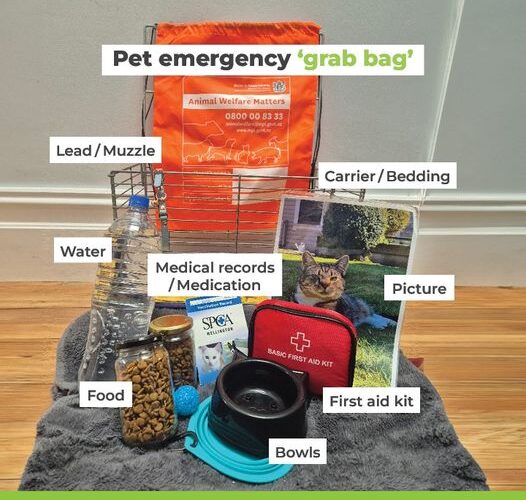
When making your plans of what to do in an emergency, don’t forget your pets. Check out the Ministry of Primary Industries website for more info: https://bit.ly/3BVdmJE. Credit to MPI for the information contained on this page.
In your emergency ...
Tsunami warnings
Wellington Regional Emergency Management Office has advised the following re why it can take some time for Tsunami warnings to be issued. :
https://www.facebook.com/share/p/RoV1TNaf3hJ3DEJ8/?mibextid=WC7FNe
After an earthquake, GNS ...
Power cuts – vulnerable customers.
Shakeout 2024
Whakahaumaru Aotearoa
New Zealand ShakeOut is the national earthquake drill and tsunami hīkoi.
ShakeOut 2024 is happening Thursday 24 October. Sign up here
Cyclone Gabrielle Review
Following the events of Cyclone Gabrielle many organisations undertook reviews of how they responded to this event. This included the Government ...
Weather on your Mobile
MetService App This app allows you to stay up to date, no matter where you are. This includes notifications for Red Severe Weather, Warnings and Extreme Fire Danger. This App provides Forecasts for over 3000 locations. Read more
CIMS Building Capacity
What your emergency kit should contain
The Healthy Food Guide have put out a guide on: How to plan and shop for an emergency kit. This includes:
- Tips for planning and shopping
- Food checklist
- How to use your emergency stores
- Water stocks
Contact in an Emergency
Will your home phone work in an emergency?
If an emergency causes a power outage, will you and your loved ones be able to use your phone to call 111?
If you have a home phone on new technology, you might qualify for extra support under the 111 Contact Code from your telecommunications provider.
View this tip sheet on using your home phone during an emergency: https://bit.ly/3wQRNBX
COVID-19
Updates on COVID-19 can be found on the Government COVID-19 website.
NEMA (National Emergency Management Agency)
NEMA was established as part of the Government’s response to a Ministerial review into better responses to natural disasters and other emergencies.
NEMA provides leadership in reducing risk, being ready for, responding to and recovering from emergencies. NEMA is the Government lead for emergency management, helping build a safe and resilient New Zealand by empowering communities before, during and after emergencies. NEMA can be either lead the emergency or support the response and recovery. Their key functions are steward, operator and assurer of the emergency management system. The provide strategic leadership for risk reduction, readiness, response and recovery activities (4 R’s) building emergency management capability and capacity. NEMA can lead or support the response to and recovery from emergencies whilst supporting the operation of the emergency management system. They can also provide assurance that the emergency management system is fit for purpose.
NEMA’s work is covered by the Civil Defence Emergency Management (CDEM) Act (200), the National Disaster Resilience Strategy, the National CDEM Plan and the Emergency Management Systems Reform programme, as set out in the Ministerial review ‘Better Responses to Natural Disasters and Other Emergencies in New Zealand.
NEMA is an autonomous departmental agency, hosted by the Department of the Prime Minister and Cabinet.
CIMS 3rd Edition
As an NZQA Category 1 Training Provider, we deliver tailored training which can include assessment for NZQA Unit Standards – CIMS Levels 3, 4, 5 & 6. The CIMS 3rd edition is an updated resource used with all our CIMS training and exercises ...
WREMO – Earthquake Planning Guide
National Disaster Resilience Strategy
The strategy can be downloaded from the MCDEM Website.
School Lockdowns
A lock down occurs where there is an identified risk and a need to contain and protect people. They are an important part of school and workplace safety and preparedness. The ...
Deaf Communities – Emergency Information
Up until now majority of the information shared about emergencies is done in media interviews, on TV and at Public Meetings. In the event of a major emergency it is important that everyone be ready and able to follow any advise given. Civil Defence and Deaf Aotearoa will work together to get New Zealand Sign Language interpreting used in emergencies where practicable – and to jointly create emergency preparedness resources.
Click here to read full article from Hon Kris Faafoi
Click here to go to Deaf Aotearoa website
McDEM – Emergency Mobile Alert
Emergency Mobile Alert messages can only be sent by the Ministry of Civil Defence & Emergency Management, Civil Defence Emergency Management Groups, NZ Police, Fire and Emergency New Zealand, the Ministry of Health and the Ministry for Primary Industries.
If your phone is on, capable of receiving them and inside the targeted area, you should get the alerts. You can find out whether your phone can receive the alerts at civildefence.govt.nz.
Emergency Mobile Alert messages do not replace other emergency alerts. They are an additional way of warning you, along with other channels. Take immediate action. Not all phones are capable of receiving the alerts, so if you receive an alert, let others know. If you feel your life is in danger, don’t wait for an official warning. Read more …..
Drones in disaster zones could prove a lifesaver
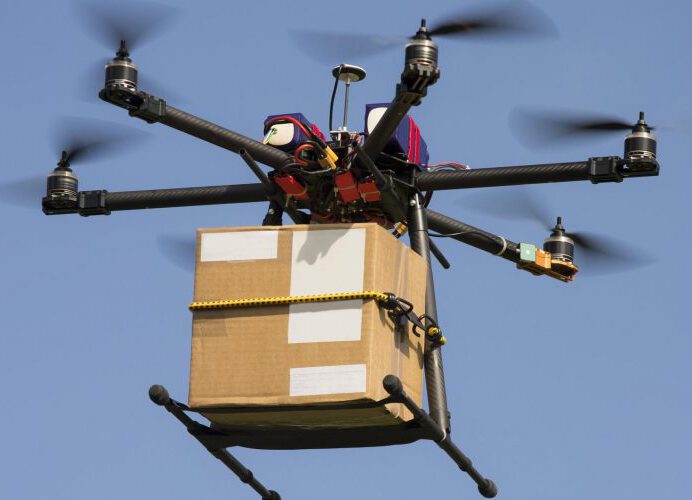
Under a collaborative agreement with the Defence Science and Technology (DST) Group, UniSA researchers have successfully trialled unmanned aerial vehicles to measure heart and respiratory rates using remote-sensing imaging systems, while hovering three metres from humans.
Video footage from the drones can detect changes in human skin tone and minute head movements to read vital signs, providing a low cost, accurate and convenient way to monitor heart rates without physical restrictions, researchers say.
The breakthrough could have many applications, including triaging disaster victims in earthquakes, detecting security and terrorism threats at airports, and remotely monitoring heart rates of premature babies in incubators.
Under the supervision of Professor Javaan Chahl, UniSA PhD students Ali Al-Naji and Asanka Perera carried out a number of experiments with 15 healthy individuals, ranging in age from 2-40 years, in both indoor and outdoor settings, and within close range of the drones.
The results were as accurate as traditional contact methods – ECGs, pulse oximeters and respiratory belts – that are currently used to monitor vital signs.
“This is the first time that video from a hovering UAV has been used to measure cardiorespiratory signals,” Chahl says.
The experiments were performed within three metres of humans but researchers expect the drones to capture information at much greater distances once the technology is further developed.
Heart monitors
The drones could help detect potential terrorists in public spaces, merely by measuring anomalies in their heart rates, according to Chahl, a Professor of Sensor Systems in UniSA’s School of Engineering.
“A person who is about to engage in violence will probably have anomalous behaviour and physiological signs.
“They might be highly agitated or unnaturally calm and in many cases they might be under the influence of drugs.
“There is a good chance that our system can detect these anomalies.”
In the developing world, expensive disposable electrodes could also be replaced with this technology to monitor vital signs remotely and eliminate the temptation to reuse the electrodes which can spread horrific skin infections between neonatal infants.
Aged care facilities may also benefit from the imaging systems which could be placed in strategic locations to monitor older people’s heart and breathing rates, Chahl adds.
“Obviously there are privacy and ethical issues around this technology that need to be resolved before it becomes common practice, but there is enormous potential to use machine vision systems to benefit society, particularly in the biomedical sphere.
“I expect we will be using this software in everyday life in the next decade.”
Source: Asia Pacific Infrastructure
Mini-relaxation exercises: A quick fix in stressful moments
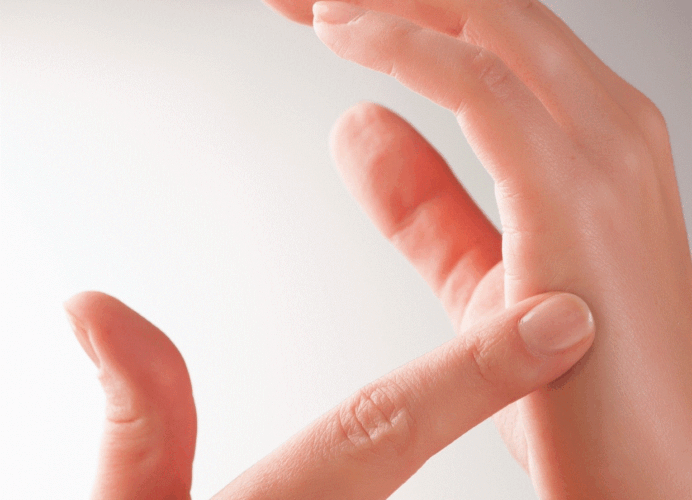
When you’ve got one minute
Place your hand just beneath your navel so you can feel the gentle rise and fall of your belly as you breathe. Breathe in. Pause for a count of three. Breathe out. Pause for a count of three. Continue to breathe deeply for one minute, pausing for a count of three after each inhalation and exhalation.
Or alternatively, while sitting comfortably, take a few slow deep breaths and quietly repeat to yourself “I am” as you breathe in and “at peace” as you breathe out. Repeat slowly two or three times. Then feel your entire body relax into the support of your chair.
When you’ve got two minutes
Count down slowly from 10 to 0. With each number, take one complete breath, inhaling and exhaling. For example, breathe in deeply, saying “10” to yourself. Breathe out slowly. On your next breath, say “nine”, and so on. If you feel lightheaded, count down more slowly to space your breaths further apart. When you reach zero, you should feel more relaxed. If not, go through the exercise again.
When you’ve got three minutes
While sitting, take a break from whatever you’re doing and check your body for tension. Relax your facial muscles and allow your jaw to open slightly. Let your shoulders drop. Let your arms fall to your sides. Allow your hands to loosen so there are spaces between your fingers. Uncross your legs or ankles. Feel your thighs sink into your chair, letting your legs fall comfortably apart. Feel your shins and calves become heavier and your feet grow roots into the floor. Now breathe in slowly and breathe out slowly.
Source: Harvard Health Publications
Commercial building owners & earthquake-prone buildings (EPBs)
The new national framework for managing earthquake-prone buildings (EPBs) that became effective on 1 July 2017 has brought several changes.
These include a national register, new forms of EPB notice that must be displayed prominently on all EBPs and set time frames for assessment and strengthening.
Councils, engineers and commercial building owners are each assigned key responsibilities in connection with the implementation of the new system. These can be summarised as follows:
- The initial identification of EPBs by councils do not involve a detailed engineering assessment of the buildings.
- Councils are required to look at building features at a high level in making their initial
...
Reserve Bank sets out its stance on cyber security

Firms in the finance sector, regulators, and other authorities all have a part to play in managing cyber security risks, a Reserve Bank executive said.
They can take on this challenge while still benefiting from the opportunities of new financial technology, said Reserve Bank Head of Prudential Supervision, Toby Fiennes, in a speech delivered to the Future of Financial Services conference, in Auckland.
“The dynamic cyber environment means organisations have to be nimble in their approach to cyber security – focused on outcomes, rather than prescriptive compliance exercises,” said Fiennes.
He said that cyber-attack poses a significant threat to the global financial system, as shown by the ‘WannaCry’ ransom-ware attack that affected more than 200,000 systems around the world and the more recent ‘Notpetya’ attack.
“The nature and incidence of cyber risk is unique, meaning that typical approaches to risk management and disaster recovery planning may not be appropriate. While cyber vulnerabilities can be mitigated, the potential sources of cyber threats and the attack footprint are just too broad, so they can never be eliminated,” Fiennes said.
The Reserve Bank had thought about whether to introduce more prescriptive requirements but decided not to at this stage.
“We doubt that prescriptive regulations would appreciably improve the outcome, when the technology and threat landscape are both changing so rapidly. We will, however, review this policy stance from time-to-time to ensure that it remains appropriate,” Fiennes said.
“The Reserve Bank is closely watching the emerging wave of ‘digital disruption’ affecting the financial sector as firms react to customer demand for a more online experience. In the short term, digital disruption may result in new risks and increased instability in the financial system but in the long term, digital disruption of the banking sector may improve the efficiency of the financial system. The long-term impact on financial system soundness is less clear. Read more.
Rural alliance fronting suicide prevention training
Some 185 farmers took their lives between 2007-15, compared with 8 per cent in the general population.
Rural Health Alliance Aotearoa New Zealand (RHAANZ) chair Dr Martin London says RHAANZ and Pasifika community support Le Va are two organisations that have been specifically funded by the Ministry of Health to upskill community groups and health professionals in suicide prevention strategies.
“Our focus is to upskill our rural health professionals and social service workers.
“We would also like to pay a little kudos to the Ministry of Health.
“In the last year, RHAANZ provided 50 workshops across regional communities upskilling them in how to talk directly about suicide with people they love and care for.”
The workshops were a resounding success, London claims. Read more here.
National code for quake-prone buildings leaves owners with less time, tighter rules
Owners could be left with less time and tighter rules in bringing quake-prone buildings up to code as national regulations are overhauled.
The changes, which begin on Saturday, will take decision-making away from territorial authorities with their own guidelines and create a single, national policy.
The Building Amendment Act 2016 sets a standardised time limit for the strengthening or demolition of quake-prone buildings to take place.
Regions will be divided into areas of low, medium and high seismic risk and deadlines will differ accordingly.
In Marlborough, a region deemed high risk, some building owners could be given two-and-a-half years less than under council rules to complete obligatory upgrades. Read more here.
Fire and Emergency New Zealand (FENZ)
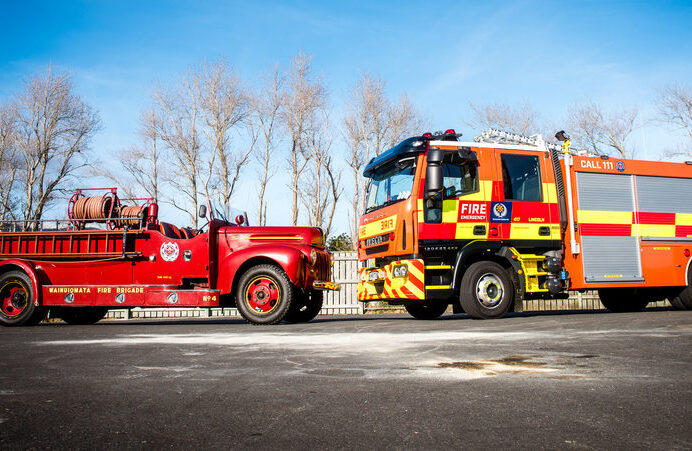
Fire and Emergency New Zealand (FENZ) was established on 1 July 2017. It is the amalgamation of the New Zealand Fire Service, the National Rural Fire Authority, 12 enlarged rural fire districts and 26 territorial authority rural fire authorities. FENZ ...
Care box for people contemplating suicide
Source: Nicholas McBride at Stuff
A care box is being developed to help people in times of high stress.
A young woman who has struggled with her own mental health is hoping to develop a care box to help others when they are contemplating suicide.
Massey University student Shailah Anderson hopes a self-help care package will get people through crucial hours or days.
Anderson, 22, said in a mental health crisis, time could be crucial.
Massey University student Shailah Anderson hopes a self-help care package will help people through tough times.
“It’s designed to buy time when someone is alone at night or waiting for an appointment in case they don’t think they can make it through the next hour or day.”
The packages will contain an array of sensory items such as perfume and stress balls, to distract the hands and mind.
Anderson said she had experienced both good and bad mental healthcare and was concerned by delays.
“I’ve found that mental health services often require people to be at a certain level of distress before they step in and that can be dangerous.”
The care package is part of a practical help project through the national Tuia Tangatahi leadership programme run by the Mayors’ Taskforce for Jobs.
The project aligned with her studies and her own experiences with mental health issues and gaps in mental health care.
Anderson also wanted to make it easier for people to connect with the right help.
The Manawatu/Horowhenua Mental Health Directory could be overwhelming at 100 pages, so she hoped to develop an app to match people to the most suitable services to them.
Mental Health Foundation spokeswoman Sophia Graham said while it was not a replacement for talking with professionals, boxes could still help. “Anything that gives people the tools they need to cope in a heightened state of crisis is going to be a good thing.”
People did not stay in high states of distress for long periods and could use things as a distraction to get through. “We know they provide a bit of a distraction, something for the brain to do.”
Even simple things could help people hold on. “You get a care box from someone who cares for you. Knowing someone cares about you is a real boon to your mental health.”
Being based on Anderson’s own experiences gave the idea more credence, Graham said.
WHERE TO GET HELP
Lifeline (open 24/7) – 0800 543 354
Depression Helpline (open 24/7) – 0800 111 757
Healthline (open 24/7) – 0800 611 116
Samaritans (open 24/7) – 0800 726 666
Suicide Crisis Helpline (open 24/7) – 0508 828 865 (0508 TAUTOKO). This is a service for people who may be thinking about suicide, or those who are concerned about family or friends.
Youthline (open 24/7) – 0800 376 633. You can also text 234 for free between 8am and midnight, or email [email protected]
0800 WHATSUP children’s helpline – phone 0800 9428 787 between 1pm and 10pm on weekdays and from 3pm to 10pm on weekends. Online chat is available from 7pm to 10pm every day.
Kidsline (open 24/7) – 0800 543 754. This service is for children aged 5 to 18. Those who ring between 4pm and 9pm on weekdays will speak to a Kidsline buddy. These are specially trained teenage telephone counsellors.
Your local Rural Support Trust – 0800 787 254 (0800 RURAL HELP)
Alcohol Drug Helpline (open 24/7) – 0800 787 797. You can also text 8691 for free.
For further information, contact the Mental Health Foundation’s free Resource and Information Service (09 623 4812).
– Stuff
How to protect your computer from Petya and other ransonware
The latest computer virus that is similar to Wannacry has spread very quickly across Europe overnight and could arrive in New Zealand at any time. It is a type of virus known as ransomware. It encrypts all files on ...
Family Preparedness – Safety Password
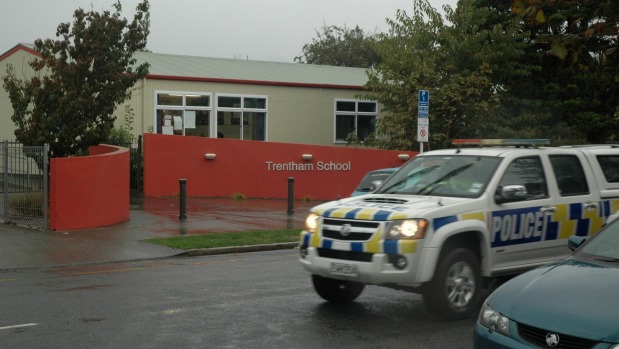
Source: The New Zealand Herald.
An Upper Hutt child escaped a possible abduction attempt because a stranger did not know the password his mother used when sending people to pick him up from school.
The Trentham School ...
Helpful tips and advice for New Zealanders affected by earthquakes
Tips for coping after an earthquake
Mental Health Foundation (2016)
A short list of things to do that can make you and others feel better under exceptional circumstances.
Take care of your children but don’t forget yourself
Mental Health Foundation (2016)
It’s not always possible to judge if or when children are scared or worried about things happening in their life They may be reluctant to talk about their fears or may not be aware of how they are being affected by the things happening to them and around them. Parents can look for clues as to how their child is reacting.
Earthquake stress information in different languages
Canterbury DHB (2011)
Following such immensely upsetting events, people understandably feel distressed. Read about common responses to an earthquake, coping mechanisms and reactions from children.
When the quakes go on and on
Skylight (2012)
Strategies for self-care when the after-shocks keep coming and nothing is certain.
Wellbeing for parents
Shaping Education (2013)
Supporting children through change in response to school change in Christchurch following the earthquakes.
Coping with stress and anxiety
Ministry of Health (2011)
Contains guidance for emergency response workers, health staff and volunteers on how to cope with stress and anxiety in an emergency situation.
When
...
Canterbury earthquake memorial
Prime Minister Bill English addressed the thousands of people gathered on Wednesday afternoon at the unveiling of Oi Manawa, the memorial to the 185 people who died in the magnitude-6.3 earthquake on February 22, 2011. Christchurch’s earthquake memorial is “a place to grieve, but also a place to hope”, says English.
Members of the public crammed into the area around the Montreal St bridge, flanking the official guests and dignitaries on the banks of the Avon River. Onlookers found vantage points in offices and apartments overlooking the scene, affording a view of the memorial.
STACY SQUIRES/FAIRFAX NZ A cyclist takes a moment to take in the memorial wall.
Oi Manawa, the earthquake memorial dedicated to the 185 victims of the magnitude-6.3 earthquake that struck Christchurch on February 22, 2011, has opened to the public on the sixth anniversary of the tragedy.
“We feel their absence keenly.”
He addressed the victims’ families directly: “We cannot know what fear or courage or hope filled the past moments of your loved ones. Today we stand with you and those who watched them go. Families, friends, workmates and complete strangers who reached for them and tried their utmost to protect them and comfort them.
“For years to come people will come to this place to remember and honour your loss as we hope today that this memorial of hopes will stitch up the ragged edges of broken hearts. You can know that the memories of your loved ones are at the foundations of this renewed city. May the living live with hope and those who have died rest in peace.”
Oi Manawa, meaning “tremor of the heart”, was designed by Slovenian architect Grega Vezjak. It is a 112.5-metre-long wall made of concrete and clad in Italian marble. It features the names of all 185 victims and sits on the banks of the Avon River near the intersection of Montreal St and Oxford Tce.
The crowd includes victims’ family and friends, some of whom have travelled from abroad and members of the public. It also features musical items from Marlon Williams, Timua Brennan and the New Zealand Army Band.
All but one of Christchurch’s so called anchor projects will be under construction this year as the rebuild finally begins to hit its straps.
‘I MISS YOU SO MUCH’
Strung around a tree nearby the memorial, notes to those who died dangle like petals, heartfelt words scrawled in many languages.
“Dear mum, I miss you so much, think about you every day,” writes Marie.
STACY SQUIRES/FAIRFAX NZ
Notes written to earthquake victim by their loved ones strung around a tree by the memorial.
“Your two granddaughters miss you as well.”
On Wednesday morning, commuters on their way to work paused on the Montreal St bridge, looking out over the water to Oi Manawa.
IAIN McGREGOR/FAIRFAX NZ
A note for Matty Beaumont, who died in the CTV building, above his name on the memorial. It reads: “We think of you every day and miss you”.
Ceremony crowd member, city resident Jocelyn Smith, said: “It’s an extreme honour to the city and the people – to those who lost their lives or loved ones, and also to those who have served in the response and rebuild.”
Megan Reilly, also of Christchurch, said she really liked the fact the families were consulted about the memorial.
“It seems nice as a place of reflection,” she said.
IAIN McGREGOR/FAIRFAX NZ Bouquets left at the memorial, which is 112.5 metres long and made of concrete, clad in Italian marble.
The wall was revealed to families and friends of victims at a private ceremony on Tuesday.
Montreal St will be closed from Oxford Tce between 10am and 2.30pm, Cambridge Tce is closed until 6pm and Oxford Tce is closed until 2.30pm.
STACY SQUIRES/FAIRFAX NZ Early-morning sun at the CTV site on Wednesday.
– Stuff
Sourced from Stuff.co.nz. Link is here. MICHAEL WRIGHT, JACK FLETCHER AND SHAR DAVIS
Wellington region updates tsunami warning maps after recent earthquake
WREMO/SUPPLIED
An updated collection of tsunami warning maps for the Wellington region have been published on the Civil Defence website, after previous versions left some residents confused and frustrated.
Wellington Region Emergency Management Office (Wremo) updated the maps to better reflect the areas most at risk of tsunami damage after a large earthquake.
It has also boosted the online accessibility of the maps, making them available in .jpg and printable .pdf formats.
Click here for an interactive map.
Map showing central Wellington’s tsunami zones.
The newly available maps now cover the entire coastline, rather than just central areas. They also build on newly acquired scientific knowledge uncovered since the maps were last created, “some years ago”.
READ MORE:
* PDF tsunami maps inadequate during time of crisis
* What went wrong after the quake and how to fix it
* Better safe than dead or maimed
Updates to the tsunami warning maps were based on “better understanding of wave dynamics within a harbour”, Wremo community resilience adviser Jason Paul said.
“Because of the large populace in the Wellington Harbour area, we’ve redone the remodelling … now we have more precise maps.”
Paul said the zones had generally been relaxed.
Prepared Kids & Cyber bullying
Devereux-Blum Training Director Sharyn thinks learning cyber safety is an important part of being a Prepared Kid. Children today are referred to as ‘digital natives’ as they can access many forms of technology. They adapt quickly to new ways of communicating like Instagram and Snapchat (forget Facebook, that’s old school according to teens). Take the example of one of our office administrator’s children who recently broke her arm in the playground. When the nurse applying the cast asked: “any questions?”, the child asked: “can I still use technology?” How can we ensure our children are safe on the internet?
(function(d, s, id) {
var js, fjs = d.getElementsByTagName(s)[0];
if (d.getElementById(id)) return;
js = d.createElement(s); js.id = id;
js.src = "//connect.facebook.net/en_US/sdk.js#xfbml=1&version=v2.8";
fjs.parentNode.insertBefore(js, fjs);
}(document, 'script', 'facebook-jssdk'));
Research done reported that 1 in 5 New Zealand high school students are being cyber-bullied. Targets of cyber bullying often say that it makes them feel scared, depressed, angry or ashamed. The impact of cyber bullying often has more of an impact than physical bullying due to its relentlessness.
Susan McLean, an expert in cyber safety, recently gave 2 talks to Scots College children. (Kapi-Mana News 12/7/16). Her top tips were:
- Be aware, be educated and be involved. Knowledge is power
- Know where your kids go online and
...
Risk Communication
At a June conference with a group of like-minded people, we explored the use of language during an emergency response. The question we discussed in depth was – is it appropriate to use ‘fear appeal’ if inaction/action would cause great injury to individuals and communities?
Sea-quake boost for tsunami prediction
Read the full article.
Wellington accepted into ‘100 Resilient Cities’ programme
Coordinated Incident Management System – CIMS Planning Function
The unit standard for this function has been reviewed and updated and split into two unit standards:
Unit Standard 32159 ‘Demonstrate knowledge of the Planning function within the Coordinated Incident Management System and:
Unit Standard 32160 ‘ Apply knowledge of the Planning function within the Coordinated Incident Management System.
Quake overhaul targets schools & hospitals
Building and Housing Minister Nick Smith has announced sweeping changes to the Building Act amid predictions in Wellington around earthquake risk.
Auckland Tsunami Zones
Access information and maps relating to Tsunami Zones in the Auckland Region .
Click on the areas of the map to find further detailed information and road map showing the specific tsunami zones for the area.
CIMS Function Manager Roles Levels 4 & 5
NZQA Unit Standards
| Unit Standard | Title | Level | Credits |
| Demonstrate knowledge of the Planning function within the Coordinated Incident Management System |
4 |
2 |
|
| Apply knowledge of the of the Planning process to a Coordinated Incident Management System response4 |
5 |
6 |
|
| Demonstrate knowledge of the Intelligence function within the Coordinated Incident Management System4 |
4 |
2 |
|
| Demonstrate and apply knowledge of the Intelligence function to a Coordinated Incident Management System response5 |
5 |
5 |
|
| Demonstrate knowledge of the Operations function within the Coordinated Incident Management System |
4 |
2 |
|
| Apply knowledge of the Operations function to contribute to a Coordinated Incident Management System response |
5 |
5 |
|
| Demonstrate knowledge of the Logistics within a Coordinated Incident Management System |
4 |
2 |
|
|
32166 |
Apply knowledge of the Logistics to contribute to a Coordinated Incident Management System response |
5 |
5 |
Devereux-Blum Training & Development Limited has consent to assess from the New Zealand Qualifications Authority under Section 252 of the Education Act 1989 for unit standards 32158-.32166
Wellington Tsunami Zones
Dealing with Stress from Disasters
Information from Massey University’s School of Psychology on Dealing with Stress arising from Disasters is available, including Factsheets.
Factsheets cover information on the following topics. View these here.
The Stress of Being Under Threat
Common Reactions to Disasters
Stress after emergencies
Helping Children
Helping Adolescents
Families and disasters
Coping Personally – Information for communities
Coping Personally – Information
...
Google Person Search
Google Person Finder is an open sourceweb application that provides a registry and message board for survivors, family, and loved ones affected by a natural disaster to post and search for information about each other’s status and whereabouts.
...
Staff
Information for Devereux-Blum employees during major emergencies.
This is where we’ll keep Devereux-Blum employees informed during serious emergency situations, like fire, earthquake, tsunami, massive power failure, snow storms or floods that prevent people from reporting to work as usual.
During a major emergency affecting our people, call Sharyn on her mobile to hear how we’re managing the situation and what you need to do.
Updates will also appear on:
Twitter at:
Research Article
This research article on the impacts on organisations and the economy following the February Christchurch Earthquake has useful information and relevance for people regarding issues still being reflected upon in 2012. Click on the link to read the ...
What if…? Planning for the worst case scenario
Reading and considering the learnings from Sharyn’s article which poses the question ‘What if…? Planning for the worst case scenario’ will help you to think about the types of ...
Dogs – Water Requirements
But what about the dogs? What do they need to drink, and how do we give it to them?
Water is a vital component of cells and body tissue, to the point that mammals are considered at least 70% water. And in fact, when considering fluid requirements, an equivalent of one kilo of body weight to one litre of water is used.
So …. I weigh 20 kg. My body contains around 20 litres of water. Every day, I lose some, I gain some. I get quite a lot from my food, but on average I need to drink about 50ml for each kilogram I weigh. This means 20 (kg) x 50 (ml) = 1000ml = 1 litre.
I need to drink one litre a day to maintain my hydration – on a quiet day. When I’m busy (training, searching, working out) I’ll need more. I’ll also need more if I have a fever, if the ambient temperature is high, and if my diet is mainly dry food.
So how do you know if I’m dehydrated?
Firstly, in an active situation in warm temperatures, assume I probably am. I’ve got better and more interesting things to do than drink! Check my gums. Lift my upper lip and touch your fingertip to the gum over my teeth. Is it moist or tacky (sticky?) Tacky gums are one of the first signs of dehydration. (Take no notice of my nose – a wet/dry nose means very little!). If I look a bit sad and flat, or things have been full-on, grab a pinch of skin over my shoulders. Lift it up and then let go. It should drop back down in 1-3 seconds. If it takes longer, I’m getting seriously dehydrated and drinking a bit more isn’t enough. I need someone to give me fluids.
How?
By mouth – offer me water. I may not drink enough to rehydrate, but hey – my mouth will taste better.
Under the skin. Subcutaneous fluids (sub-cut, S/Q) get a lot of fluid into me, but it may take me some time to absorb them to where they’re needed. Be very careful about hygiene, and only use isotonic (same concentration as body fluid) solutions to avoid
serious damage. In the vein. IV fluids are rapidly assimilated and redistributed. They need to be given under supervision – too fast and they can kill.
Best advice
Know your dog, know its fluid requirements, and know some tricks to get it to drink when the heat is on.
Water is the fluid of choice. Dogs don’t need Powerade. Sometimes flavouring the water may make them
drink more, but clean, fresh water is what most dogs need.
Global Reach Associates
Global Reach Associates, as well as providing facititation support for the Earthquake + Natural Hazards NZ business cluster, provide specialist services to individual businesses and project task groups to assist them rapidly develop ...
Wellington’s Earthquake Prone Buildings
The list shows 808 buildings in Wellington are identified as at risk in a major quake, and 172 of those need urgent strengthening.
Wellington City Council spokesman Richard MacLean says if work is not carried out, it’s feasible whole streets could disappear.
Most at risk are Cuba Street, Willis Street and Courtenay Place.
“For example, look at Cuba Street, there’s probably a huge long list of buildings in Cuba Street that are on that list and they were built 120 years ago. They will be badly damaged unless they are strengthened,” MacLean said.
MacLean says it is going to be a tricky task balancing public safety with heritage values.
About 20% of earthquake-prone buildings on the list are heritage buildings.
Willis Street has 14 buildings that require remedial work.
Buildings that need earthquake-proofing to standard have been given 10 years.
Note:where a building listed has the term ‘124 Served’, this means earthquake-prone building notices issued under Section 66 of the Building Act 1991 have been reissued a notice under Section 124 of the Building Act 2004 requiring strengthening.
If you are interested in the services we can provide please contact us by email.
Seismic Restraints
We don’t carry this out ourselves however we can recommend a colleague who specialises in securing furnishings and equipment to meet seismic standards. Mark Burling runs Seismic Restraints NZ and is able provide you with this service.
For further information email Sharyn.
Storing Drinking Water
Water is the single most important thing to store in preparation for an emergency. We can live without food for a few days but we cannot live without water. For an emergency we need to store at least three days worth of water. Each person should store ...


